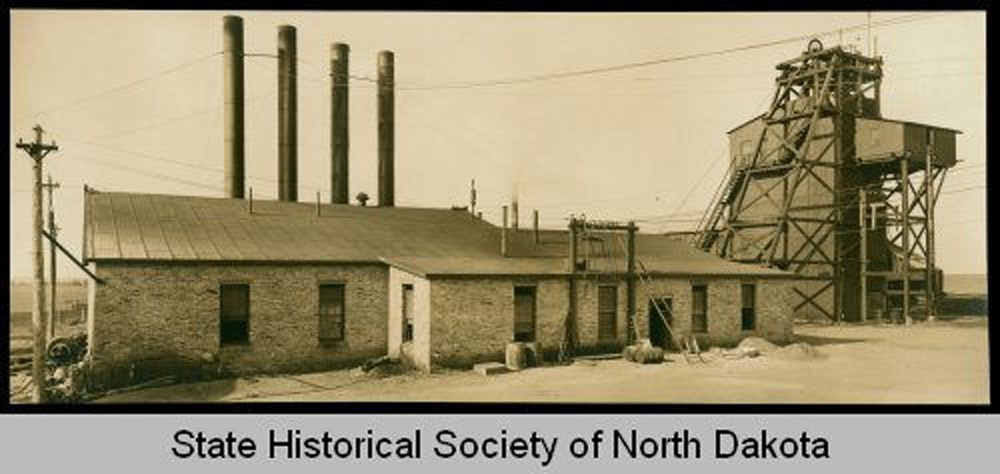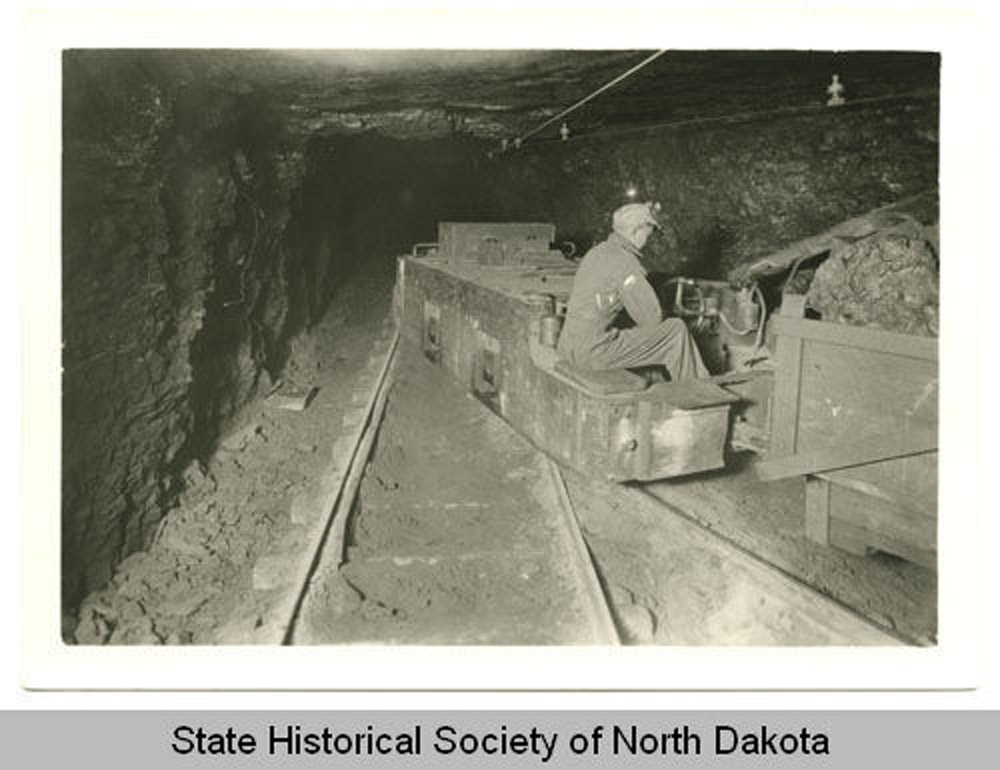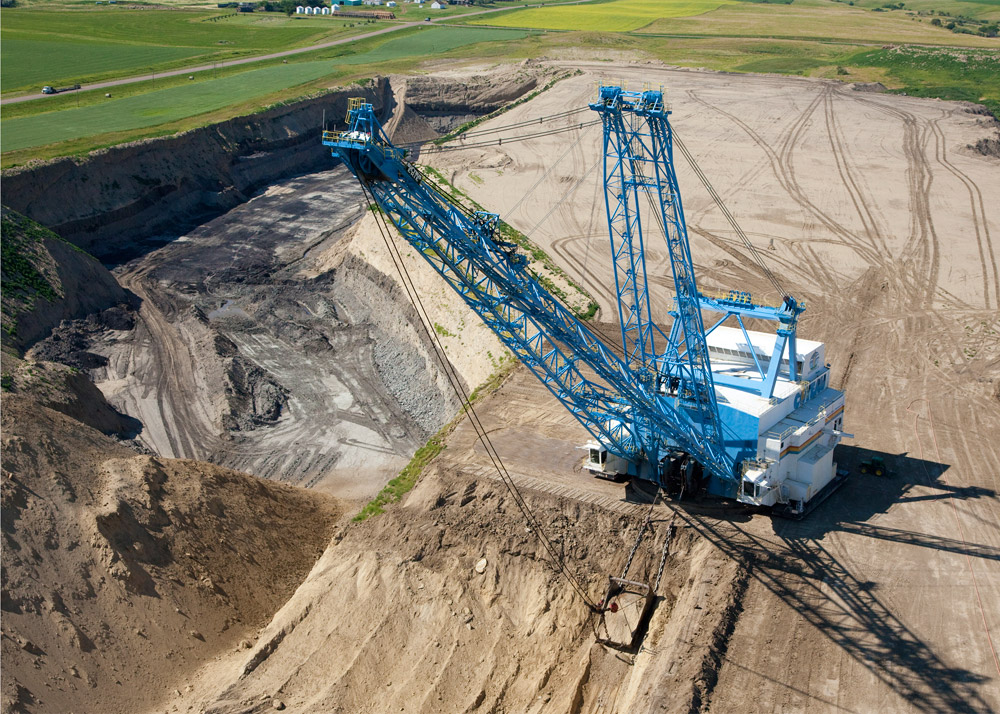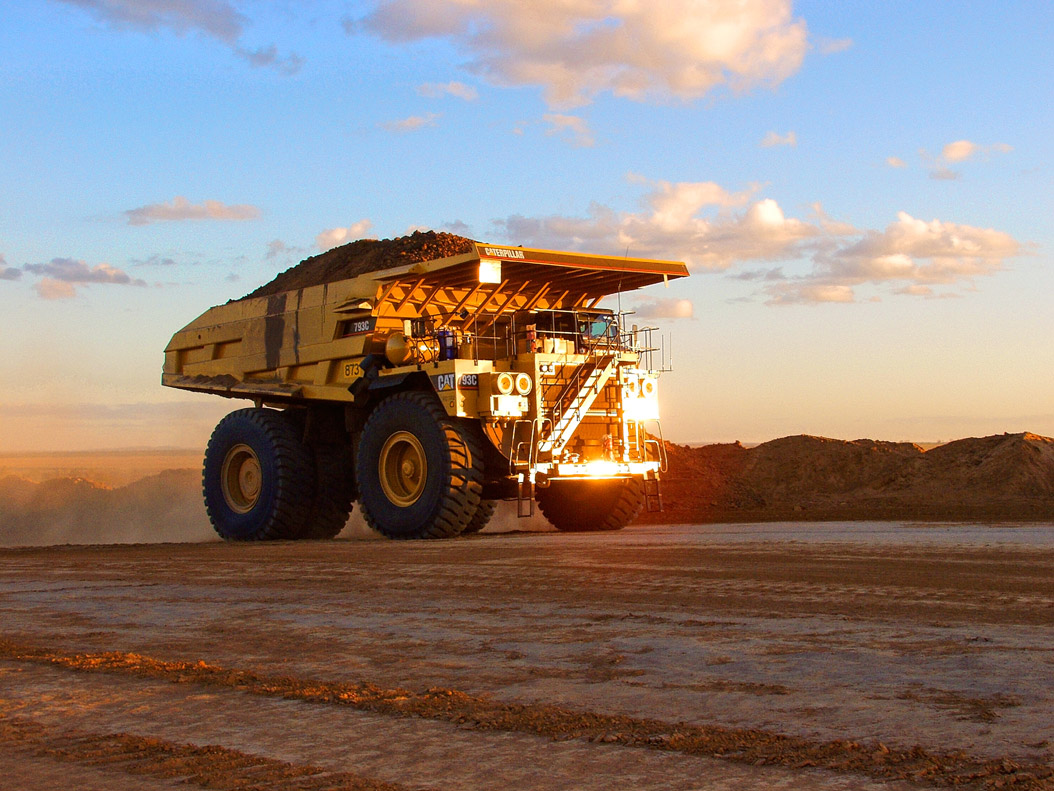- Some of the early settlers used lignite as a fuel for heating their homes.
- North Dakota’s first commercial lignite mine was opened in 1873 in Morton County.
- Steamboats and railroads used lignite to power their steam engines.
- By 1900, over 70 lignite mines were operating in the state.

Washburn Mine: In 1920, the mine at Wilton, founded by General William Washburn, was the largest lignite mine in North Dakota. Photo courtesy of the State Historical Society of North Dakota.
- By the early 1920s, North Dakota had approximately 250 lignite mines.
- Together, these mines produced close to 1 million tons of coal.
- In 1920, the mine at Wilton, founded by General William Washburn, was the largest lignite mine in North Dakota

Motor Train: Some of the underground mine tunnels extended for thousands of feet. Picture of a motor train inside the Washburn Lignite Coal Company Mine, courtesy of the State Historical Society of North Dakota. Photo courtesy of the State Historical Society of North Dakota.
- About half of the early mines in North Dakota were underground mines.
- Underground mines are dangerous in North Dakota because the state’s geology does not have the hard rock layers needed to support the ground above the coal.
- Underground mines have caused problems in some areas where sinkholes have been created by the collapse of mine tunnels.
- The Abandoned Mine Lands (AML) Division, a division of the ND Public Service Commission has worked to stabilize these areas by digging out old mine workings or pumping grout into the cavities. Mining companies pay eight cents per ton of coal, or approximately $2.5 million a year to fund AML projects across the state.
- When steam shovels and other large earth-moving equipment became available, surface mining replaced underground mining in North Dakota.
- There are no underground mines operating in North Dakota today.
Surface mining means separating and removing the topsoil and subsoil (or Suitable Plant Growth Material – SPGM) with mobile equipment, then removing the overburden (or soil parent material that does not support plant growth) with draglines. The coal is then fractured and loaded into large haulage trucks. Because lignite is so close to the surface, it is cheaper and safer to surface mine than to mine underground.

Dragline photo: A dragline at the Freedom Mine near Beulah digs into the earth. Photo courtesy of Basin Electric Power Cooperative.

Coal truck: Large trucks are used at a coal mine to help move materials.
- Lignite production reached 3.2 million tons in 1951.
- In 1994, lignite production reached a high of 32.2 million tons.
- Approximately 30 million tons of lignite continue to be mined annually in North Dakota.
- In North Dakota, topsoil and subsoil are removed first and stored separately.
- Layers of rock and soil are then removed from the top of the coal layer with draglines and put into an area where coal has already been removed.
Dragline POV and Operator Seq: See the dragline work from the point of view from a dragline operator. Video courtesy of Basin Electric Power Cooperative.


